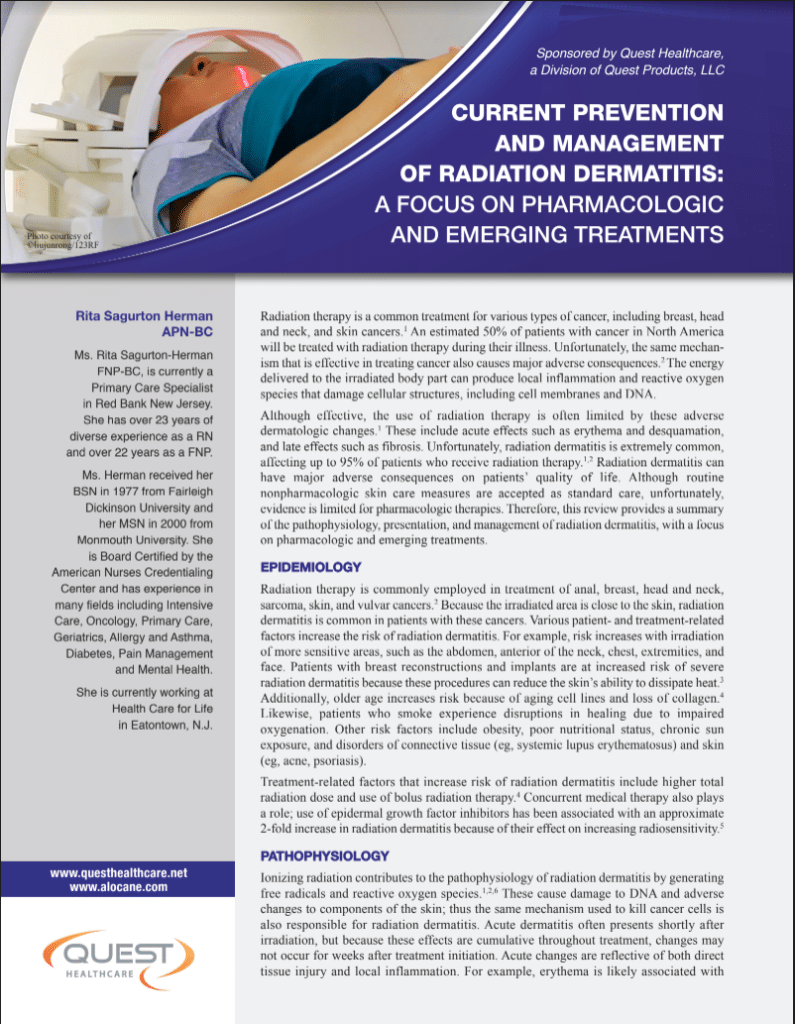Current Prevention & Management of Radiation Dermatitis

Although effective, the use of radiation therapy is often limited by adverse dermatologic changes. These include acute effects such as erythema and desquamation, and late effects such as fibrosis. Unfortunately, radiation dermatitis is extremely common, affecting up to 95% of patients who receive radiation therapy.
Routine nonpharmacologic skin care measures are accepted as standard care. Unfortunately, evidence is limited for pharmacologic therapies. Therefore, this review provides a summary of the pathophysiology, presentation, and management of radiation dermatitis, with a focus on pharmacologic and emerging treatments.
Complete the form to download the white paper today.
Download the White Paper
About this White Paper
Radiation dermatitis can have major adverse consequences on patients’ quality of life. The diagnosis of radiation dermatitis is a clinical one, relying on assessment of skin changes and recent exposure to radiation therapy, as well as consideration of predisposing risk factors. This illustrated guide contains a summary of the pathophysiology, presentation, and management of radiation dermatitis, with a focus on pharmacologic and emerging treatments.
This white paper contains information on the following topics:
- Definition and epidemiology of radiation dermatitis
- Etiology and pathogenesis of radiation dermatitis
- Risk factor evaluation using CTCAE criteria
- Clinical features and Multinational Association for Supportive Care in Cancer measure recommendations for treatment
- Guideline recommendations on prevention and management
- Emerging treatments including photobiomodulation and topical analgesics, antiseptics, and antioxidants
- Composition and clinical benefits of ALOCANE® Plus
